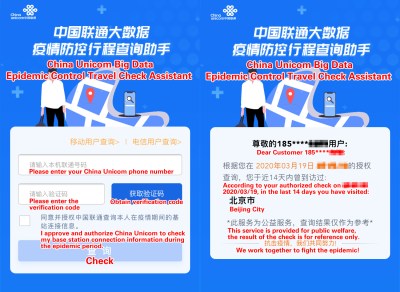The content below is taken from the original ( Cellular Tracking Used During COVID-19 Pandemic), to continue reading please visit the site. Remember to respect the Author & Copyright.
As most in the technology community know, nation states have a suite of powerful tools that can be used to trace and monitor mobile phones. By and large, this comes up in discussions of privacy and legislation now and then, before fading out of the public eye once more. In the face of a global pandemic, however, governments are now using these tools in the way many have long feared – for social control. Here’s what’s happening on the ground.
The Current Situation
With COVID-19 sweeping the globe, its high level of contagiousness and rate of hospitalizations has left authorities scrambling to contain the spread. Unprecedented lockdowns have been put in place in an attempt to flatten the curve of new cases to give medical systems the capacity to respond. A key part of this effort is making sure that confirmed cases respect quarantine rules, and isolate themselves to avoid spreading the disease. Rules have also been put in place in several countries where all overseas arrivals must quarantine, regardless of symptoms or status.

In order to achieve this, Israel has begun to use the cellular devices to track suspected coronavirus cases. Using technology initially developed for counterterrorism purposes, it allows Israeli authorities to monitor the movements of individual citizens. If a citizen is detected as having spent 10 minutes or more within 2 meters of an infected person, they are sent a text message instructing them to self-isolate until a particular date. While a very effective method of tracing possible infection contacts, it also shows the incredible granularity of the data available to Israel’s Shin Bet intelligence agency. With this capability, it would also be trivial to track phone users for enforcement purposes, too.
South Korea has also been actively tracing citizen’s mobile phones. Public health organisations have sent out texts detailing the recent movements of infected people, revealing intimate details of their citizens private lives. In one ridiculous case, a woman who had supposedly sustained serious injuries in a recent car accident was noted to be travelling to weddings and restaurants, leading to a grilling by TV reporters after she was identified by internet users.
Iran tried a more obvious method, asking users to install an app that promised to help diagnose coronavirus symptoms. It secretly leaked user’s live location data, and once this was public knowledge, it was promptly removed from the Play Store for breaking Google’s Terms of Service. This method is quite transparent to even a moderately technical user, and stands out for this reason. Of course, this does not mean that Iran doesn’t have more serious capabilities behind the scenes for cellular tracking, but it does raise questions as to why such a blatantly obvious approach would be attempted.

China has dealt with COVID-19 longer than anyone, and is heavily experienced with domestic surveillance technologies. An independent source has confirmed this technology is being used for access control to buildings. At entry points, individuals scan a QR code which takes them to a phone provider’s website. Entering their details, the user is shown a record of their location in the last 14 days. If they have avoided disease hot zones, they’re granted admittance to the facility.
Justification?
The ideal democracy governs with the consent of the people. While people might object to the invasion of their privacy like this in normal circumstances, they may be willing to make this tradeoff in times of peril. It’s not clear that any of the above-mentioned countries attempted to obtain their citizens’ consent.
What stops governments from using these same domestic spying powers after the health crisis ends? Oftentimes, even if it’s not used in the mainstream, intelligence organisations that operate in the dark can get away with using such tools with impunity, even in violation of the country’s own laws. We know that many have been doing so for years. If anything, it serves as a useful reminder to the public that no mobile device can be considered secure from nosy government actors.
Looking Ahead
It’s important to remember that cellphone-based tracking systems come with a major caveat. Those who don’t wish to be tracked always have the option of simply not carrying a cellular device. There are currently no nation states that enforce the carrying of a mobile phone, and so the best way to dodge such tracking is to simply opt-out of the technology altogether. In this modern era, anyone making such a decision is giving up a lot, and it’s not one that can be made lightly. For some though, it’s no option at all – where phones are used for access control to buildings, it’s hard to avoid. In China, for instance, a corona-tracking function has been tied into Alipay, the most popular pay-by-phone app, and some cities require a green light on a cellphone to use public transportation.
World governments have shown their hand, making it clear to the public that they have an immensely powerful and threatening technology at their disposal, and that they’re willing to use it without consent. While it is currently being employed in service of public health, the potential ramifications are plain to see. It may prove difficult for citizens to win back civil liberties that have been suspended in the current quarantine. Time will tell.




